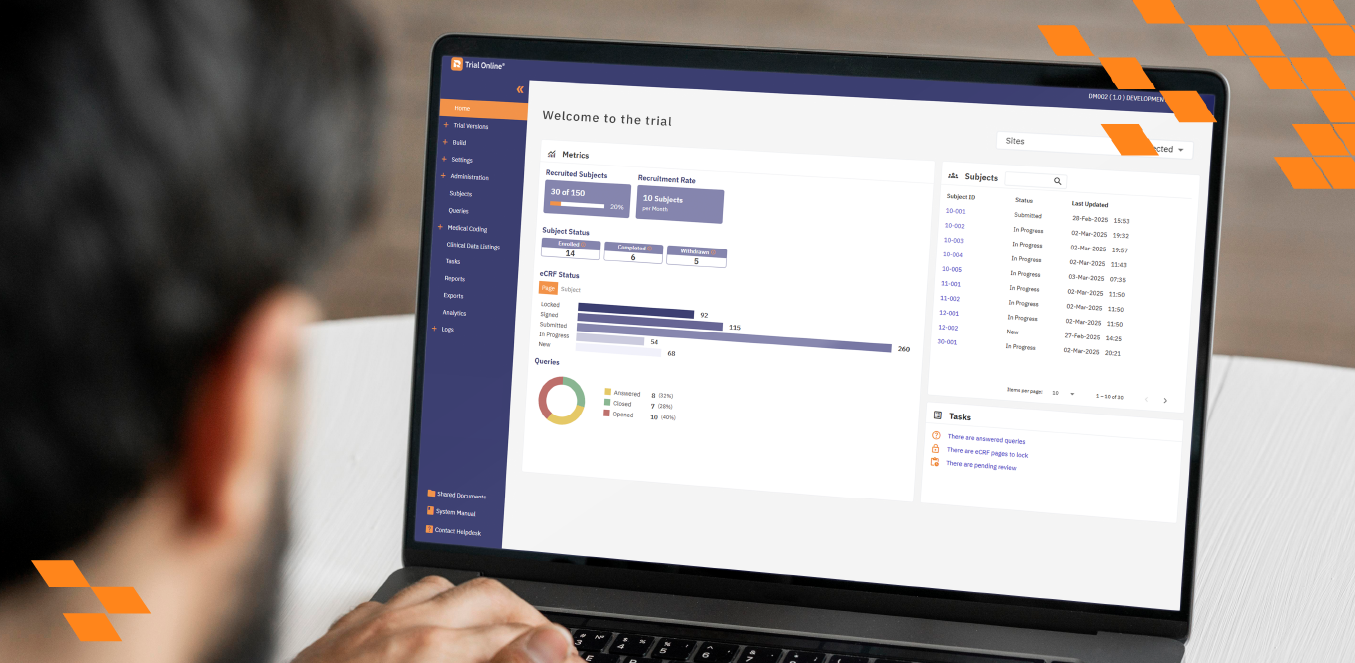As the landscape of clinical research undergoes a continuous transformation through the adoption of decentralized or hybrid clinical trials, two digital titans emerge at the forefront: Electronic Patient-Reported Outcomes (ePRO) and Electronic Clinical Outcome Assessment (eCOA) tools. These two crucial tools integrated in clinical research practice not only heighten the precision of data collection but also improve patient engagement, driving the industry towards more patient-centric research practices.
Decentralized clinical trials (DCT) or hybrid clinical trials are captivating the attention of patients and healthcare providers. The appeal lies in its ability to enhance patient engagement, optimize costs, and revolutionize data collection mechanisms. DCTs not only empower patients with accessible participation and autonomy but also optimizes the invaluable time invested by investigators, site staff and study teams.
The Role of eCOA and ePRO in Clinical Trials
In the context of Decentralized Clinical Trials, ePRO and eCOA take centre stage. These digital tools are the driving force behind the collection, organization, and evaluation of patient health data throughout the treatment journey. They play a pivotal role in not only measuring treatment efficacy and medication safety but also providing insights that empower both researchers and healthcare providers.
Difference Between eCOA and ePRO
The eCOA and ePRO tools are both digital methods used to collect patient-related data in clinical trials and healthcare settings, but they serve slightly different purposes and encompass distinct types of data.
eCOA involves the use of electronic devices, such as smartphones, tablets, or computers, to collect a variety of clinical data. This data can include not only patient-reported information but also data recorded by clinicians or other trained personnel. eCOA encompasses a broader range of assessments, including clinician evaluations and observations alongside patient-reported outcomes. It’s often used to capture a comprehensive view of a patient’s health status, disease severity, and treatment progress.
eCOA Main Takeaways:
- Involves patient-reported data as well as healthcare professionals-generated data.
- Used for assessments requiring a combination of patient and clinician inputs.
- Enables a holistic evaluation of treatment effectiveness and disease progression.
The ePRO, on the other hand, focuses exclusively on collecting patient-reported data electronically. Patients use digital devices (their own or provisioned devices) to directly input information about their symptoms, experiences, quality of life, and treatment-related outcomes. This method empowers patients to contribute their own perspectives on their health and well-being, providing real-time insights into their experiences. ePRO is particularly valuable for capturing subjective data that only the patient can provide.
ePRO Main Takeaways:
- Concentrates solely on patient-reported data.
- Requires a patient-centric design.
- Directly captures patients’ experiences, symptoms, and perceptions
- Offers real-time insights into patient well-being and treatment impact.
- Enhances patient engagement and enables patient-centric research.
Key Elements for a Successful ePRO
The success of an ePRO implementation lies on several key factors and are the critical elements that contribute to a successful ePRO:
Patient-Centric Design
A successful ePRO system is built with the patient in mind. The user interface should be intuitive, user-friendly, and easy to navigate, ensuring that patients of varying technical backgrounds can comfortably use the platform.
Accessible
The ePRO system must be accessible on multiple devices, such as smartphones, tablets, and computers, on patient’s phone but also, if not possible, on a provisioned device for its purpose. This ensures that patients can conveniently submit their data from anywhere reducing barriers to participation.
Engaging Patient Experience
Elements such as gamification that are designed to make the ePRO experience engaging and interactive contribute to higher patient engagement and motivation to consistently provide accurate data.
Real-Time Feedback
Providing immediate feedback to patients after they enter their data can reinforce their engagement and encourage them to continue using the system.
Guiding Notifications and Reminders
The ePRO should guide participant activity through notifications and reminders. From clinical trial protocol-related guidance to treatment instructions, and upcoming visits information.
Engaging Patient Experience
Elements such as gamification that are designed to make the ePRO experience engaging and interactive contribute to higher patient engagement and motivation to consistently provide accurate data.
Real-Time Feedback
Providing immediate feedback to patients after they enter their data can reinforce their engagement and encourage them to continue using the system.
Guiding Notifications and Reminders
The ePRO should guide participant activity through notifications and reminders. From clinical trial protocol-related guidance to treatment instructions, and upcoming visits information.


